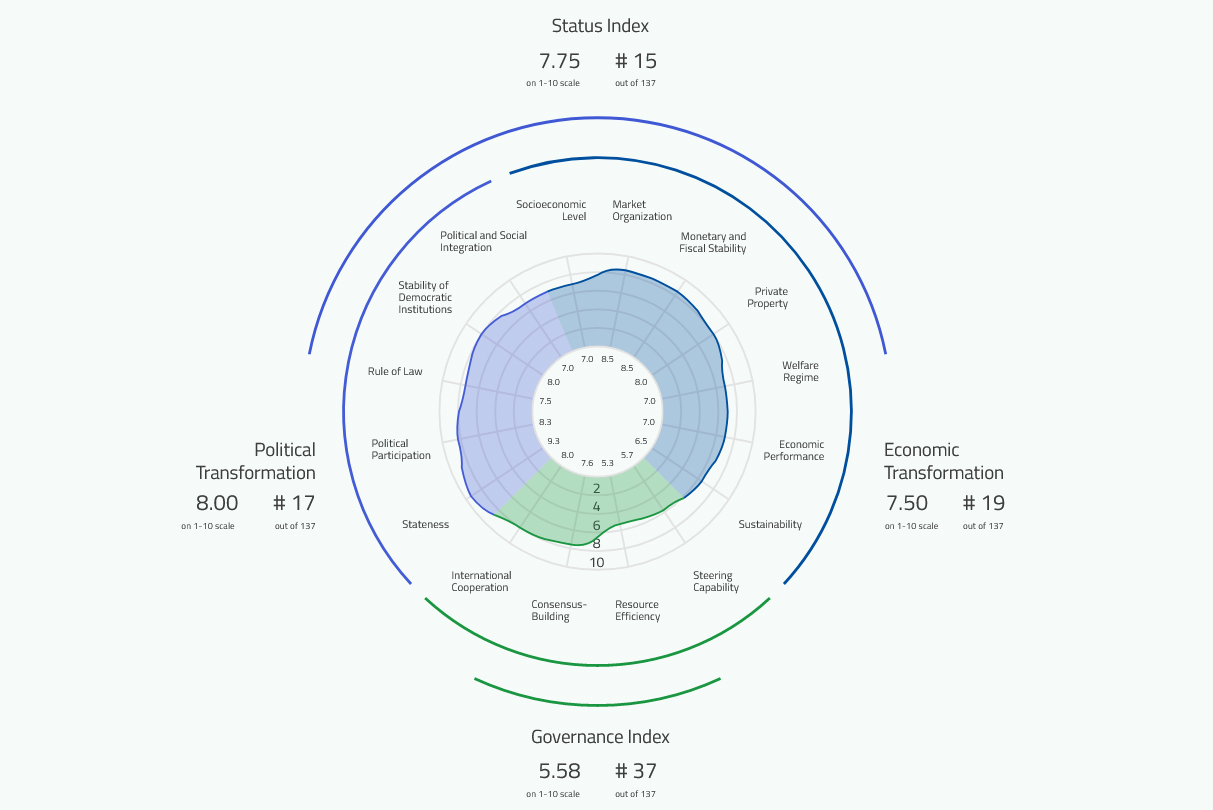The creation of a modern Romanian state started in the mid-19th century and its consolidation following “the European model” as an explicit, deliberate political project continued until World War II. Western models of statehood, democracy and a market economy were transplanted to a largely rural society, with significant ethnic diversity in cities and some provinces. The result was a democracy dominated by a small political and economic elite, which only partly represented wider societal interests. It had not internalized the concept of popular sovereignty, even after the introduction of a general (male) suffrage after WWI. National mobilization became a substitute for modernization or integrative strategies in the new, enlarged state with sizable minorities.
Despite the massive socioeconomic transformations forced upon the country after the Communist takeover in 1947, important flaws and imbalances were perpetuated. The last 10 years of Nicolae Ceauşescu’s autarchic rule, a period described as “sultanistic communism,” were especially harsh on the population. The ruling clan treated the state and the party as their property, rather than neutral instruments of policy. Rampant nepotism followed, as well as economic hardship and the illusion of equity. By the early 1980s, the combination of rhetorical independence from Moscow and Stalinist domestic control through forced industrialization had run its course, resulting in widespread shortages, economic decay, and a return to nationalist propaganda in a desperate attempt to gain some legitimacy.
The regime collapse in 1989 through a bloody popular uprising led to power struggles among different groups of the nomenklatura. The violent end of Communism did not lead therefore to a clean break with the past, but a gradual and painful transition lasting the good part of a decade. The concepts of a market economy and pluralist democracy were not exactly popular among the new leaders, who were mostly reformed communists. Having inherited several disadvantages, Romania was much slower than many other countries seeking EU accession to institute its post-communist reform process.
The first true rotation of elites took place at the beginning of 1997, when the first center-right government started to implement what others in the region had done five years earlier: restructure heavy industry and mining, liquidate economic black holes, consolidate the banking system, privatize large state-owned enterprises, liberalize most input prices and establish currency convertibility. The social and political resistance to reforms was high and led to several rounds of violent uprisings by the losers in the process, mainly blue-collar workers. These chaotic protests, famously carried out by the coal miners throughout the 1990s, were also manipulated by conservative forces and members of the old intelligence services.
The second decade of transition, after 2000, was marked by the struggle between two main political poles. On the center-left, the Social Democratic Party (PSD) pursued a pro-growth agenda and sought to take advantage of the prospective benefits of EU membership, while at the same time preserving political control through mild authoritarianism and a clientelistic party machinery. On the center-right, the Democratic Party (PD), operated mostly in opposition but nonetheless delivered the directly elected president Traian Băsescu, who supported, partially out of conviction but also for tactical reasons, the EU rule of law agenda. The fight against corruption, increasingly visible and supported by Romania’s partners, primarily the European Commission, became the main issue defining politics in Romania after 2005. It became the key factor determining the country’s ruling coalitions, the formal and informal parliamentary alliances, and the rise and fall of various political leaders.
The global economic crisis of 2008-09 forced successive Romanian governments to implement a harsh austerity package which cost the leaders in power the elections that followed, but eventually balanced the budget and created the basis for robust economic growth after 2013. The anti-corruption drive was also successful, leading to numerous investigations and convictions of high-level public officials, business leaders and media moguls. The success of this drive made Romania something of a role model among new EU member states. While the country saw several rotations in power until 2020, the government now demonstrates a basic pro-European and pro-NATO orientation.
Casting industry in Romanian
Casting is the shaping of metals and alloys by melting and pouring the melt into a chamber, called mold, and then cooling and freezing it to the shape of the chamber. This method is the oldest way to make the finest shape of metals. The first casting furnaces were made of clay and layers of copper and wood were arranged in them.
Casting is considered in different fields of science, art and technology. No matter how much casting advances scientifically, in practice, is still the experience, taste and art of the mold maker and caster that guarantees the preparation of a healthy and flawless piece. This technique is one of the most basic methods of production since more than 50 percent of the parts of all kinds of machines are prepared in this way. Metals that have little plastic properties and pieces in complex shapes are formed by casting.
Casting, depending on the technology and set of equipment involved in molding, includes the following: casting in a sand mold, casting in a particular method (metal molds), casting in a metal mold and with low pressure, casting in a metal mold with pressure High, Disamatic, Precision Casting, Casting in percussion molds, etc. Each of the above items has its application, which is used considering the production rate of the piece, its desired quality, dimensions, and the material of the mold.
A bright future is expected for Romania. The production units of unbreakable cast iron pipes are among the new factories in Romania, and two casting factories have also started working recently. The only problem in Romania is that 70% of the country’s production capacity is provided by only 20% of its production units.



Your website has lots of useful information.